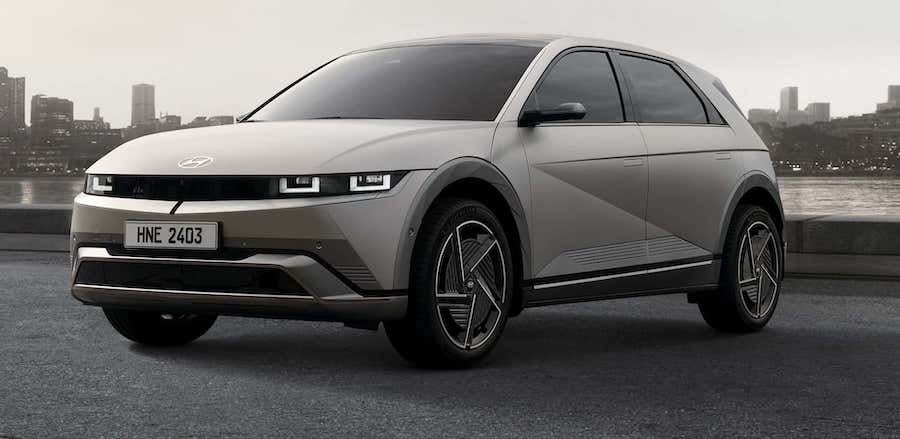2025 Ioniq 5 Is Proof That Hyundai Listens to Its Customers, Here's What's New

Most also correctly identify it as an electric vehicle. That's great, especially when you realize that this hatchback-like crossover SUV is not trying to be in your face or shout that it's battery-powered. Plus, it looks cute. But with the 2025 model-year refresh, the automaker might have created a ride that proves customer feedback matters at Hyundai HQ. Here's everything you need to know about it.
The Hyundai Ioniq 5 was one of the first few mass-produced EVs sporting a battery with the 800V architecture. That meant it was an affordable electric crossover SUV that could take advantage of 350-kW dispensers, like those found at some Electrify America stations.
But as it often happens with first-generation vehicles, the cool Ioniq 5 came with some issues. The 12V batteries kept failing. There were level 2 charging (mainly overheating) woes because the integrated charging control unit (ICCU) failed on many units, and the solution was to limit charging speed. There was a loss of motive power on many units that kickstarted a federal investigation. To top it all off, technicians had a hard time fixing what was wrong because of parts being shipped late or Hyundai not releasing the right documentation.
The two-year-old vehicle debuted with two high-voltage battery options: a 58-kWh pack and a 72.6-kWh pack. The latter was upgraded to a 77.4 kWh energy storage unit in late 2022. Those are all gross values.
Soon enough, the refreshed Ioniq 5 models will hit showrooms boasting an 84-kWh battery that should increase the range by about 19 miles (30 kilometers). The crossover SUV should be able to cover 301 miles (484 kilometers) on a single charge in ideal conditions. There is no change regarding the charging speed.
The new Ioniq 5 is also longer, now measuring 183.2 in (4,655 mm) in length. The EV has slightly different front and rear bumpers, too!
Under the new rear spoiler, at the bottom of the rear windshield, there is now a wiper! No need to constantly apply an anti-rain solution or hope it won't drizzle while you're out and about. Yes, it's standard. Another proof that Hyundai listens to customer feedback is that the 2025 Ioniq 5 has physical buttons for the heated and ventilated seats and the heated steering wheel. Moreover, the marque has organized the shortcuts found on the new three-spoke Ioniq 6-inspired steering wheel.
One can only hope that Hyundai also changed the panel that protects the battery because that's a known weakness. It can lead to costly repairs and unwanted headaches.
Inside, you'll also find knobs for volume and finding your preferred radio station, new bezels for the infotainment system and driver's instrument panel, wireless Apple CarPlay and Android Auto, and an A/C panel that has been reorganized.
Some markets will get digital side mirror cameras and the associated interior displays, but they probably won't make it on the US-bound models. It's a shame, really. These cameras, although expensive to replace, can see much better than the human eye when it's foggy, rainy, or the sun is shining too bright.
There are new outside LEDs that indicate the EV's charge level when plugged in, a more prominent LED light strip in the front, new automatic air intakes and radars in the lower front bumper that look sleeker, new wheel designs, new colors, updated cameras, an improved wireless charging pad, and no more drawer-like glove box.
Hyundai also said that it made a couple of mechanical changes (like new shock absorbers) that improved quietness in the cabin. The automaker also added more safety assistance systems and made sure to add the buttons that, once pushed, fold the second row of seats with ease.
The new 2025 Ioniq 5 should also be safer thanks to reinforced front and rear doors and B-pillars. Plus, there are new airbags.
The brand also introduced the Ioniq 5 N Line for the first time, which makes the EV a bit more stylish and sporty. Keep in mind that choosing this one will most likely mean that you're trading some comfort and range for larger wheels and some styling.
Finally, the facelifted Ioniq 5 is already hitting showrooms in South Korea. It'll be made available to the rest of the world throughout 2024. This EV proves that Hyundai listens to customers and is also the last E-GMP platform iteration for this model. The next Ioniq 5 will be built on the Integrated Modular Architecture (IMA) platform, which should add LFP batteries and smaller wiring into the mix.
